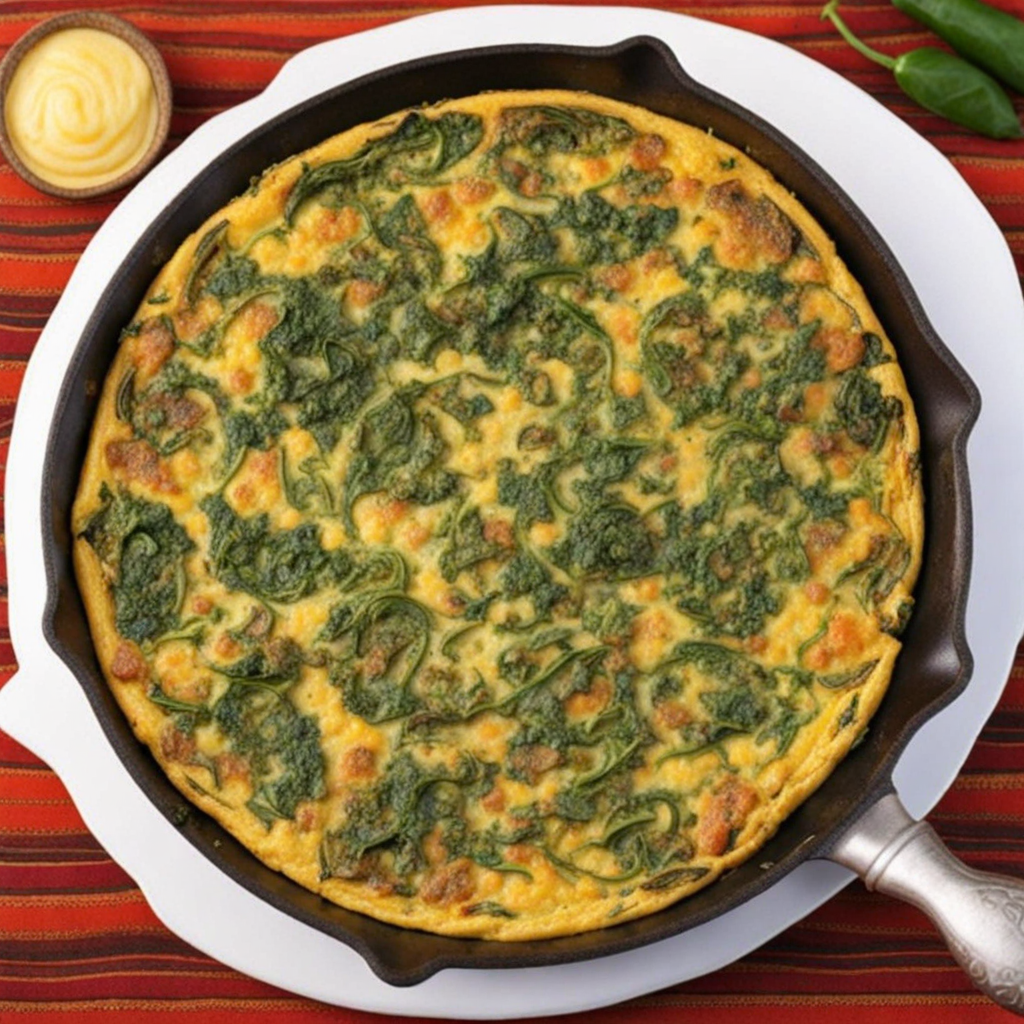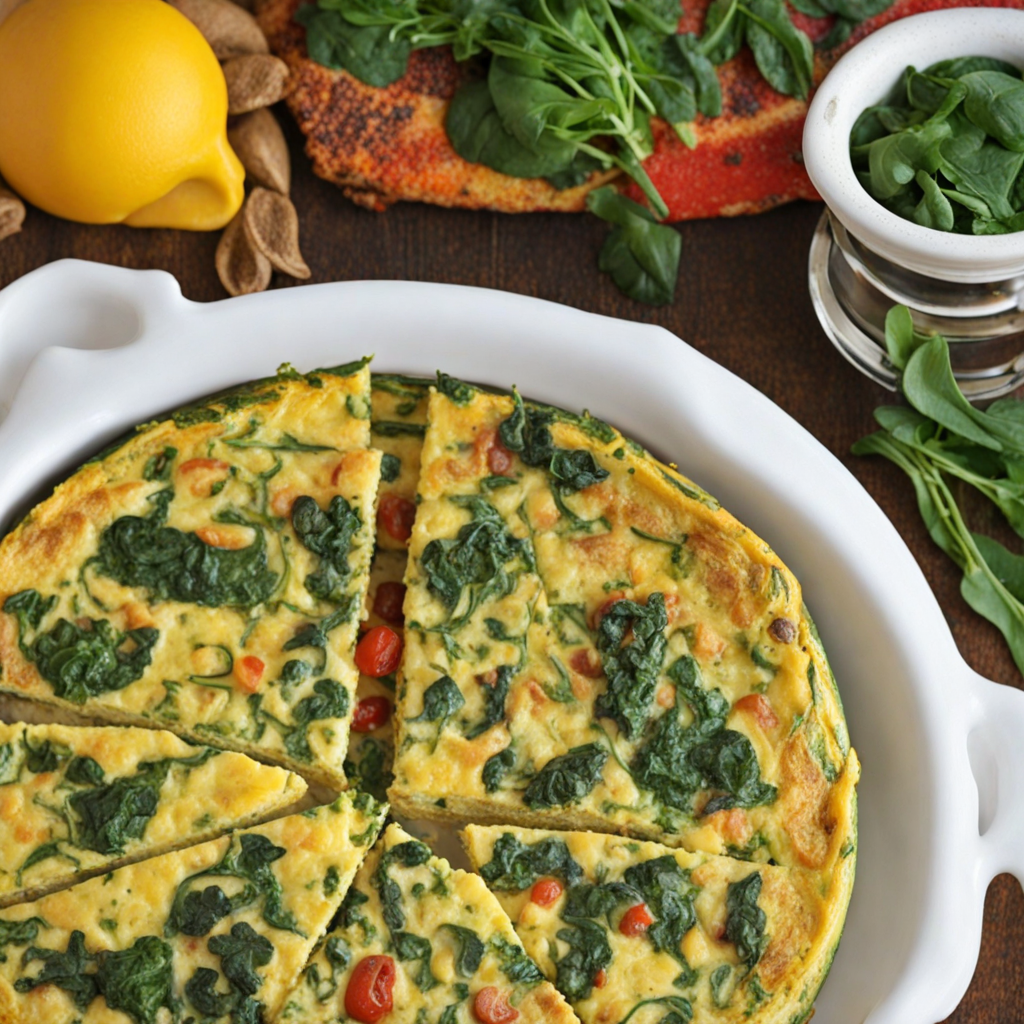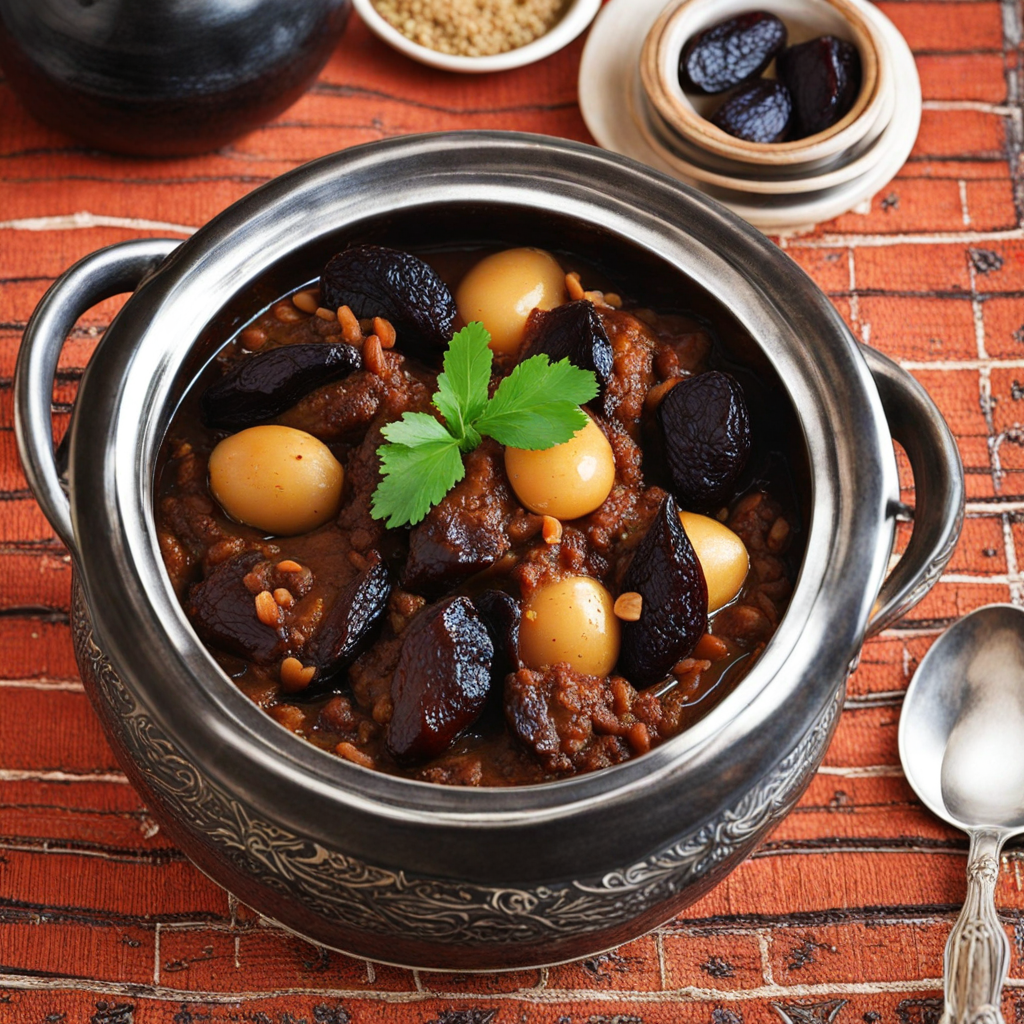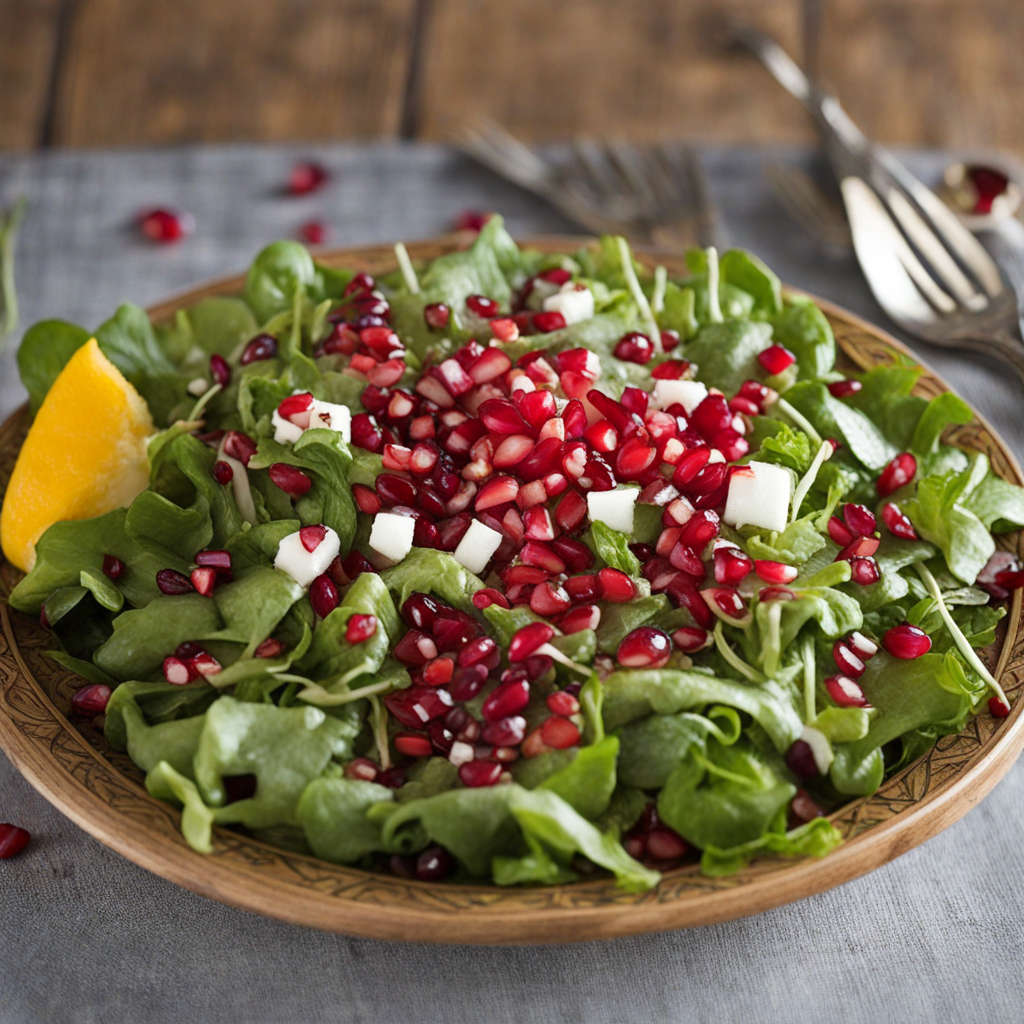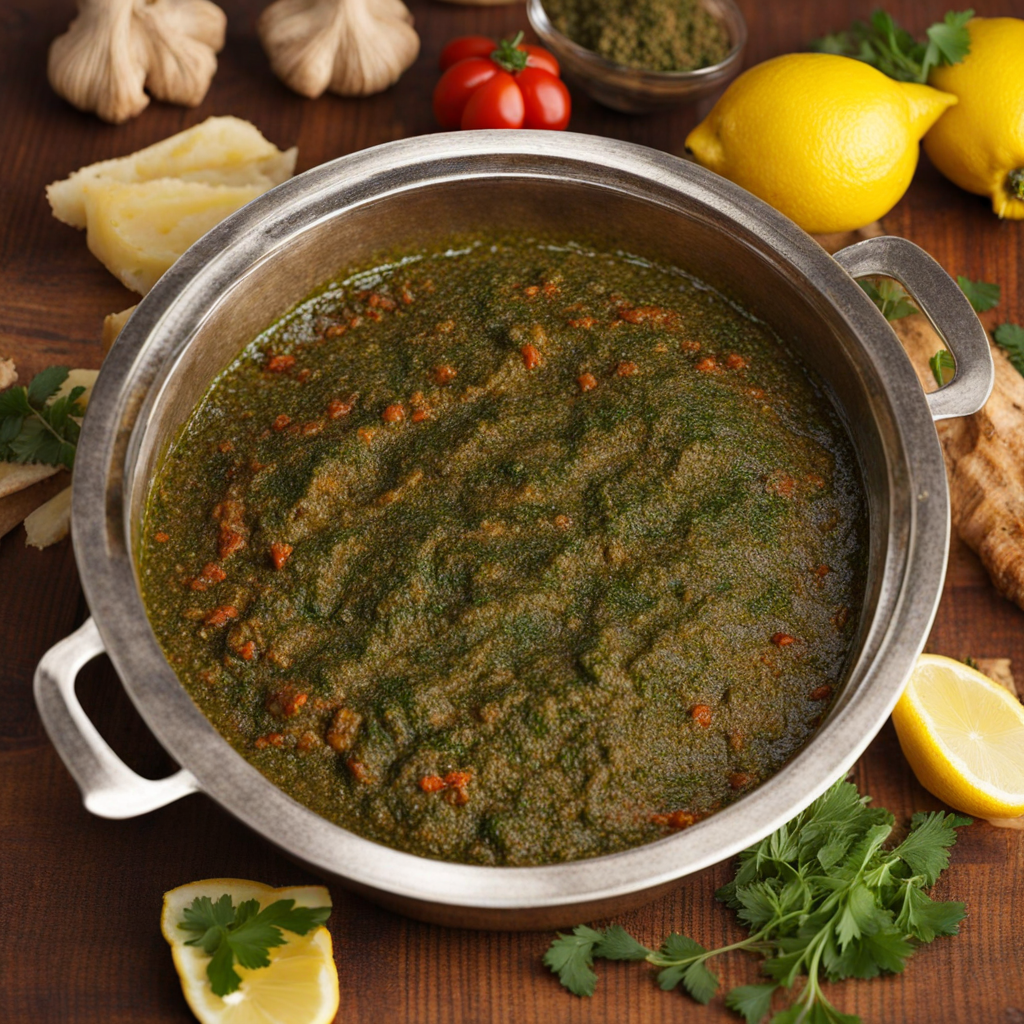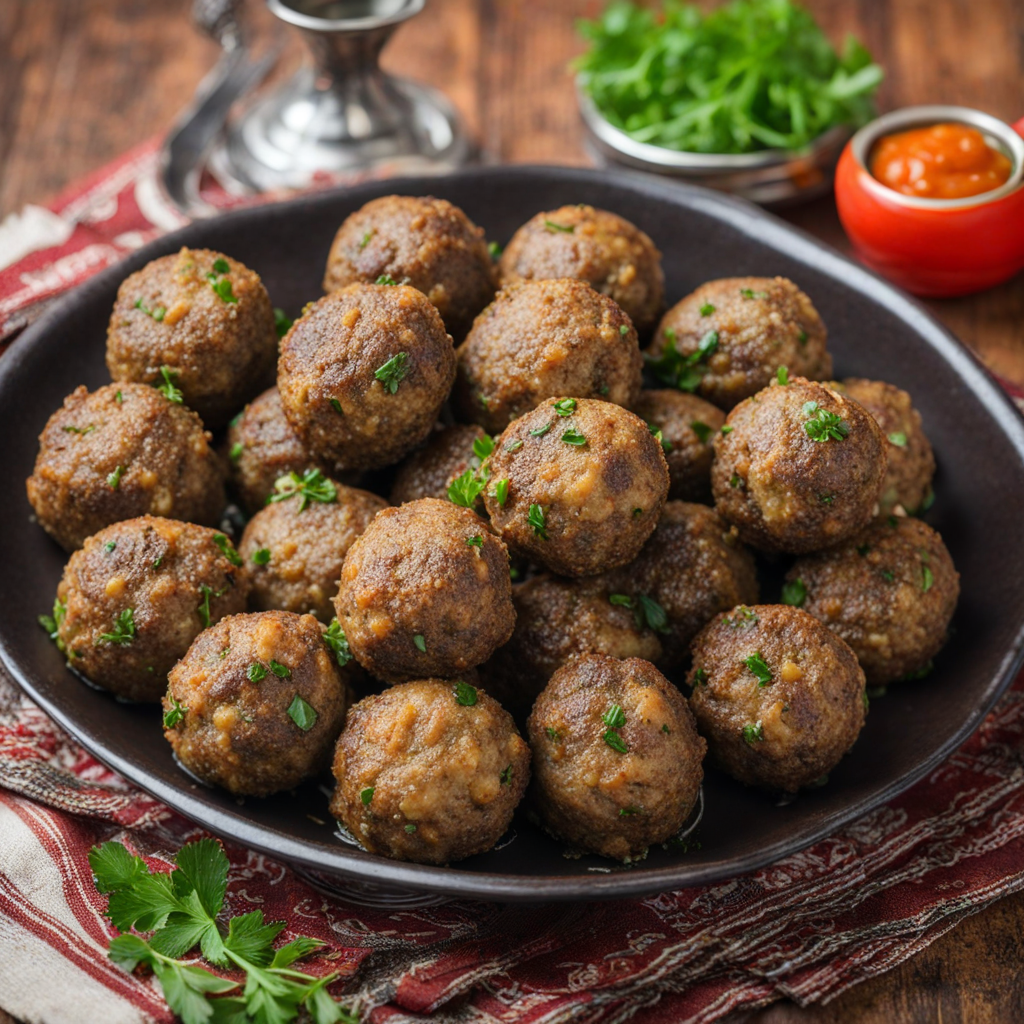Moroccan Frittata
Moroccan Frittata is a vibrant and aromatic dish that beautifully blends the essence of Moroccan spices with the comforting texture of a traditional frittata. At its core, this dish combines eggs with a medley of colorful vegetables, such as bell peppers, tomatoes, and zucchini, all sautéed to perfection. The unique twist comes from the addition of spices like cumin, coriander, and paprika, which infuse the frittata with a warm and earthy flavor profile, transporting you to the bustling markets of Morocco with each bite. The frittata is often enhanced with the inclusion of fresh herbs such as cilantro or parsley, adding brightness and freshness to the dish. Sometimes, it features ingredients like olives or preserved lemons, which contribute a tangy depth, elevating the overall taste experience. The result is a dish that is not only visually appealing, with its rich colors and textures, but also a harmonious balance of flavors that delight the palate. This Moroccan-inspired frittata is versatile enough to be enjoyed any time of day, whether served as a hearty breakfast, a light lunch, or a delightful dinner option. It can be paired with a side of crusty bread or a simple salad for a complete meal. Each slice of this frittata offers a journey through the spices and culinary traditions of Morocco, making it a perfect choice for anyone looking to explore new and exciting flavors in their cooking.
How It Became This Dish
A Culinary Journey Through 'عجة مغربية': The Moroccan Omelette Origins and Early Influences The dish known as 'عجة مغربية' (Ajja Maghribiya) is a unique Moroccan omelette that reflects the rich tapestry of cultural influences that have shaped Moroccan cuisine over centuries. The origins of this dish can be traced back to the profound historical interactions between Berber, Arab, and Mediterranean cultures. As one of North Africa’s most vibrant culinary landscapes, Morocco has long been a melting pot of flavors and techniques, with each community contributing to the national identity. The Berbers, the indigenous people of Morocco, have been cooking with eggs for millennia. Their traditional methods often included simple ingredients like herbs, spices, and vegetables, which are still vital to the Moroccan culinary tradition today. The introduction of eggs into Moroccan cuisine is likely ancient, given that chickens were domesticated in the region thousands of years ago. With the Arab conquest of North Africa in the 7th century, the culinary landscape began to shift. Arabs brought with them new spices and cooking techniques, which began to influence local recipes. The blending of these cultures fostered a unique food identity that would eventually lead to the development of dishes like Ajja Maghribiya. Cultural Significance Ajja Maghribiya is more than just a dish; it is a symbol of Moroccan hospitality and communal eating. In Moroccan culture, food is an integral part of social life. The act of sharing meals, especially during family gatherings and celebrations, underscores the importance of community and togetherness. Ajja is often served as part of a larger spread, which might include tagines, salads, and bread, allowing for a communal dining experience. The versatility of Ajja also reflects the Moroccan approach to cooking—using what is locally available and in season. Traditionally, it is made with eggs, often combined with fresh vegetables such as potatoes, tomatoes, and peppers, along with a blend of spices that may include cumin, paprika, and cilantro. This adaptability makes it suitable for any meal of the day, whether breakfast, lunch, or dinner, and it can easily cater to the tastes and dietary preferences of family members. Moreover, Ajja Maghribiya holds a special place during Ramadan, the holy month of fasting. It is often prepared for iftar, the meal to break the fast, as it provides nourishment and sustenance after a day of abstinence. Development Over Time As Morocco entered the modern era, the culinary landscape continued to evolve. The French protectorate from 1912 to 1956 introduced European ingredients and cooking styles, further influencing traditional dishes like Ajja. The fusion of French techniques with Moroccan flavors allowed for the emergence of new culinary expressions while ensuring that the essence of traditional dishes remained intact. In contemporary Morocco, Ajja Maghribiya is not only a staple in homes but has also found its way into cafes and restaurants, where chefs experiment with its preparation. Some versions include the addition of meats, such as minced lamb or chicken, and others may enhance the dish with regional cheeses or olives, showcasing the ongoing evolution of this beloved recipe. The global interest in Moroccan cuisine has also spurred a renewed appreciation for dishes like Ajja Maghribiya. As culinary tourism has gained popularity, travelers seeking authentic Moroccan experiences have turned to cooking classes, food tours, and local eateries to savor traditional dishes. This interest has not only contributed to the preservation of Ajja's recipe but has also allowed for the reinvention of traditional cooking methods. Modern Variations and Global Influence With the rise of health consciousness in recent years, Ajja has also adapted to accommodate new dietary preferences, including vegetarian and vegan options. By substituting traditional ingredients with plant-based alternatives, chefs are reimagining this classic dish for a modern audience. For instance, chickpea flour can replace eggs, allowing those who avoid animal products to enjoy a version of Ajja that retains the spirit of the original. Furthermore, the globalization of food culture has led to an interesting fusion of Moroccan flavors with international cuisines. Chefs around the world have begun to incorporate spices typical of Ajja into various culinary contexts, elevating the profile of Moroccan cuisine globally. This cross-pollination of flavors means Ajja Maghribiya is not just confined to the borders of Morocco but is celebrated and appreciated in diverse culinary scenes worldwide. Conclusion The evolution of Ajja Maghribiya is a testament to the resilience and adaptability of Moroccan cuisine. Rooted in a rich history of cultural exchange, this simple yet flavorful dish embodies the values of community, hospitality, and the joy of sharing food. As Moroccan cuisine continues to gain recognition on the global stage, Ajja stands as a cherished emblem of Morocco's culinary heritage. In its journey from ancient Berber kitchens to modern Moroccan tables, Ajja Maghribiya has proven to be more than just an omelette; it is a symbol of Morocco's complex identity and the unifying power of food. As we savor this dish today, we partake in a tradition that has been passed down through generations, celebrating the flavors and stories that have shaped Moroccan culture and cuisine. Whether enjoyed at a family gathering, a festive occasion, or as part of a culinary adventure, Ajja Maghribiya remains a delicious reminder of the warmth and richness of Moroccan hospitality.
You may like
Discover local flavors from Morocco


